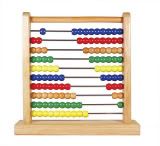My students come to my classroom with vastly different prior schema. Some are used to all sorts of learning tools, Leap Pad, computers, cameras, dvr/dvd machines, mp3 players, calculators, etc., some have only seen PC's and are surprised to find Macs as a learning center in my room, and still others don't have a computer in their home, much less a dvd player.

While kindergarten tends to be left out of the heavy debates regarding curriculum on inservice days, I'm still responsible for getting all of my students groomed for the first grade. When one first grade teacher is having students author short stories and use educational resources online while the other teacher merely sees computer use as a reward (and gives out "reward time" very sparingly) most of what I've tried to do gets undone before my students ever make it to the second or third grades. With each successive grade, the use of technology in education grows exponentially. Finding teachers themselves all falling within very disparate comfort levels when it comes to the technology that may be available to them and their students, I often find myself trying to anticipate other teachers' shortcomings when setting up learning centers/experiences for five and six year olds. "If **I** can give them the exposure, maybe my students won't be impacted too terribly while they tread water in the next grade." It's a horrible thought.

My classroom is for exposure, exposure, exposure, and exploration/development, exploration/development, exploration/development. So no matter the prior schema, all students can start where they need to, and go where their interests lead them. They receive gentle prodding when necessary by me, but are usually motivated to explore with their friends. I still use the overhead projector, modeling use of math tiles, coins, base ten blocks, Judy clocks, etc., but also give my students overhead transparency sheets for their artwork, so when bulletin board space doesn't allow, we can put temporary displays up and the kids feel like they are in an art gallery, their masterpieces filling the walls, larger than life!

My students use calculators, headphones and dvd players, my iMacs, and printers. Microscopes, hand lenses, thermometers, microwaves, and a tabletop laminator are used by students with extra supervision. Cash registers and "dead" phones in dramatic play, hammers and screwdrivers for creative and LOUD constructions, and musical instruments round out centers filled with paints/puzzles/puppets/ and clay in my room. There aren't many first grade classrooms that carry over learning centers like these.
I understand that the older children get, the more their "exposure" occurs thanks to being able to speak and read. And I've met some teachers who believe "Why experience it when you can read about it?" With all of the curriculum that needs to be covered and tested each year, teachers need to find ways to show students concepts in a timely manner. But when students find topics of interest and don't have the time and resources to continue to explore, learn about and experience them because teachers are reluctant to stretch their own horizons, how can we feel we are truly doing our jobs? I personally don't feel the need to be "up" on every new trend or fashion that comes out of our human expression, but I do believe that students should know HOW and WHERE to safely explore their interests, utilizing all resources available, and technology is at the heart of them.
I've realized that technology isn't a passing fad or trend, but an essential element to how we live, learn and share. If we want our diverse students to communicate, demonstrate knowledge, explore concepts and curiosities, and navigate the world as safely as possible, then we as teachers must diversify our knowledge base enough to offer our students the tools they may or may not want, choose, or be required to use, be they overhead projectors, dvd players, computers, or whatever technological innovation is waiting around the next corner.
GETTING those tools of course, is another matter.

No comments:
Post a Comment
As always, thank you for your comments, tips, suggestions and questions!